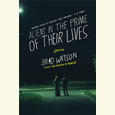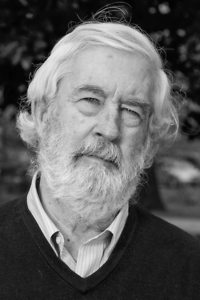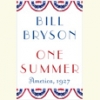Slow Violence, Then and Now
Rob Nixon discusses writers, activists, and the challenges of the Global South
A chemical explosion in Bhopal, India. The extraction of natural resources from the Niger Delta in Nigeria. Cluster bombing in the Middle East. The threat of massive evacuation of the Maldives, due to global climate change. In Slow Violence and the Environmentalism of the Poor, Rob Nixon chronicles such crises across the Global South, while also examining how writers can serve as activists, dramatizing these plights to compel action.
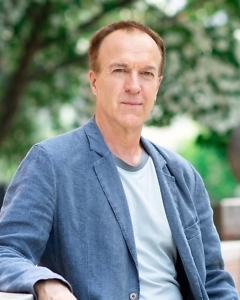 Nixon is the Currie C. and Thomas A. Barron Family Professor in the Humanities and the Environment at Princeton University. He is the author of four books, including Dreambirds: The Strange History of the Ostrich in Fashion, Food, and Fortune, which was a New York Times Notable Book of the Year. Slow Violence and the Environmentalism of the Poor won a host of prizes, including the American Book Award.
Nixon is the Currie C. and Thomas A. Barron Family Professor in the Humanities and the Environment at Princeton University. He is the author of four books, including Dreambirds: The Strange History of the Ostrich in Fashion, Food, and Fortune, which was a New York Times Notable Book of the Year. Slow Violence and the Environmentalism of the Poor won a host of prizes, including the American Book Award.
Nixon answered questions via email from Chapter 16.
Chapter 16: What is “slow violence”? How can it help us understand issues of environmental justice?
Rob Nixon: By slow violence I mean a violence that occurs gradually and out of sight, a violence of delayed destruction dispersed across time and space, an attritional violence that is typically not viewed as violence at all. For example, climate breakdown, toxic drift, oil spills, and Agent Orange. Slow violence is pertinent to environmental justice because the incremental unfolding of threats to human and environmental health is experienced unequally by wealthy and impoverished communities. Time can become a kind of camouflage for long-term damage to society’s most vulnerable, whose full humanity is routinely discounted by developers, politicians, and global corporations.
Chapter 16: The book analyzes the works of a wide variety of writer-activists, such as Ken Saro-Wiwa and Arundhati Roy. Obviously, their activism shaped their writing. Did their writing shape their activism?
Nixon: Yes, I believe so. Being both a writer and an activist is a difficult balancing act. The former requires long stretches of immersive solitude, while the latter requires sustained engagement with NGOs, politicians, community groups. It takes great energy and courage to sustain both a writerly privacy and a public-facing, collaborative presence.
Chapter 16: You credit the American writer Rachel Carson, author of the famous book Silent Spring, as an inspiration. What can Carson’s example teach us?
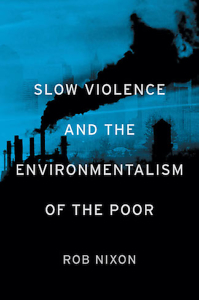 Nixon: Because of her familial responsibilities as a caregiver and breadwinner, Carson never had the chance to complete a Ph.D. That fact, plus the profound prejudice she suffered as a woman scientist (at a time when only 1% of tenured scientists in the U.S. were women), shaped her public profile. She had to persuade the American public that the post-WWII proliferation of chemicals — in agriculture, in the home, in the workplace — constituted an unprecedented hazard. But she had to do so while maintaining a calm exterior, given that her corporate adversaries readily dismissed her as a “hysterical” woman. Carson’s success in influencing environmental legislation is a reminder of the value of clear writing and of persistence, no matter what the odds.
Nixon: Because of her familial responsibilities as a caregiver and breadwinner, Carson never had the chance to complete a Ph.D. That fact, plus the profound prejudice she suffered as a woman scientist (at a time when only 1% of tenured scientists in the U.S. were women), shaped her public profile. She had to persuade the American public that the post-WWII proliferation of chemicals — in agriculture, in the home, in the workplace — constituted an unprecedented hazard. But she had to do so while maintaining a calm exterior, given that her corporate adversaries readily dismissed her as a “hysterical” woman. Carson’s success in influencing environmental legislation is a reminder of the value of clear writing and of persistence, no matter what the odds.
Chapter 16: Your mentor was Edward Said, the cultural critic, literary scholar, and founder of the field of postcolonial studies. How did Said shape your own approach as a scholar and writer?
Nixon: He made me less parochial as a thinker and more determined to engage in public-facing writing. At the time — this was the 1980s at Columbia — deconstruction was in vogue. But Said refused to indulge in the involuted prose, the impenetrable thickets of intellectual self-involvement, that were pervasive at that time. Said, like Carson, was brave in the face of great adversity. He also exposed me, for the first time, to the politics of the Palestinian struggle. Having left South Africa as a political exile, I was immediately struck by the many painful half-echoes between the discrimination leveled against Palestinians and black South Africans.
Chapter 16: Slow Violence and the Environmentalism of the Poor was originally published in 2011. Have any developments in the past decade reinforced or reshaped your thinking on the issues that you tackled in the book?
Nixon: First, COVID-19 has brought to the fore the way structural inequities can become a form of slow violence. Pre-existing vulnerabilities — from, say, racist zoning laws — disproportionately burden minority communities. With COVID, those pre-existing vulnerabilities result in another layer of unequal health risks. Second, it is encouraging to see that the current EPA seeks to outlaw so-called `forever chemicals,’ which permeate the nation’s water supply. Third, as the scholar Mary Merton notes, all violence — both slow and rapid — places an extra burden on women, who are typically landed with the role of primary caregiver. Whether we’re talking about the intergenerational fallout from Agent Orange or the enduring challenges suffered by COVID long-haulers, it’s women who are most often saddled with the slow work of rehabilitating the physically and psychologically wounded.
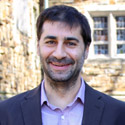
Aram Goudsouzian is the Bizot Family Professor of History at the University of Memphis. His most recent book is The Men and the Moment: The Election of 1968 and the Rise of Partisan Politics in America.

